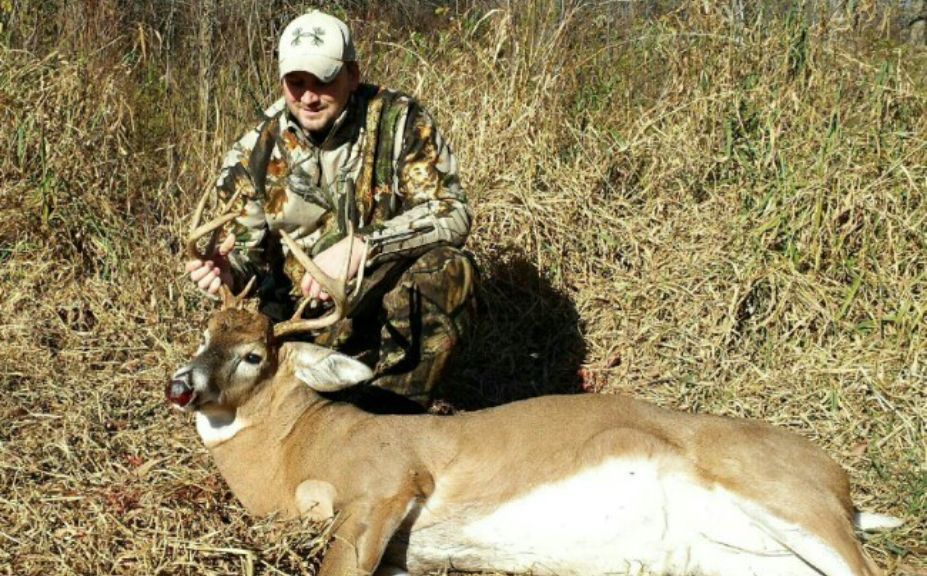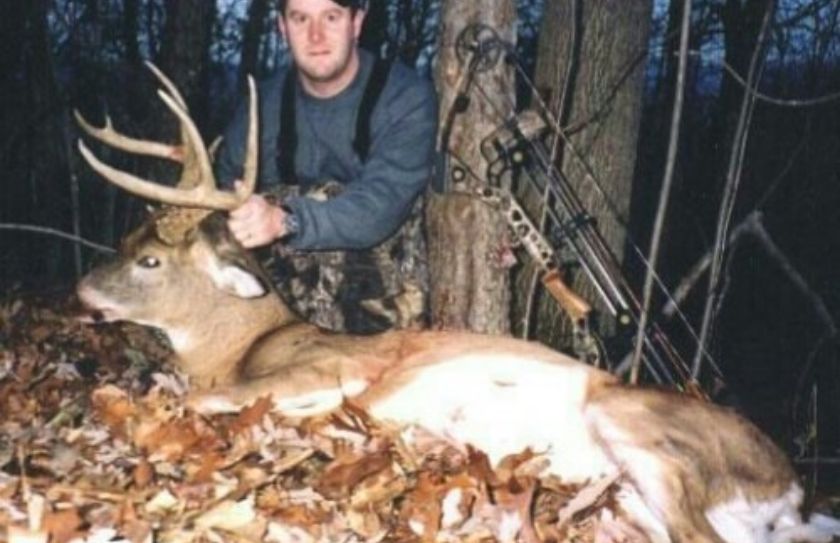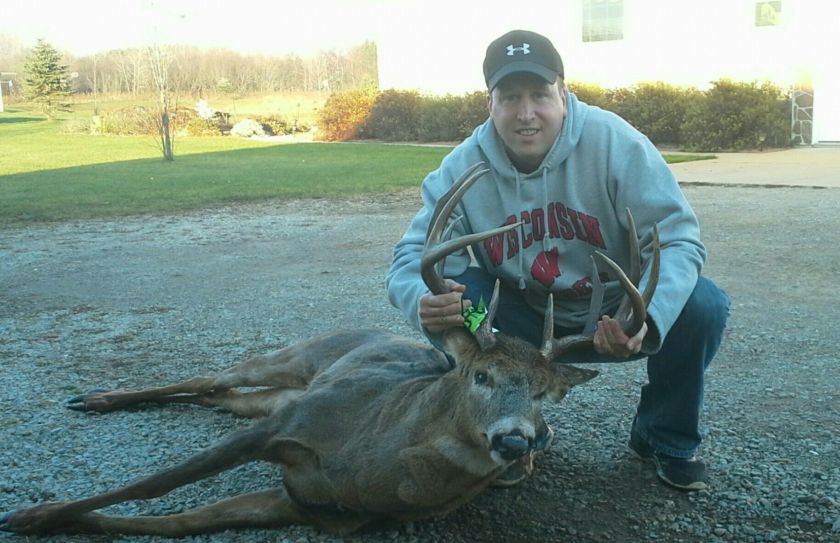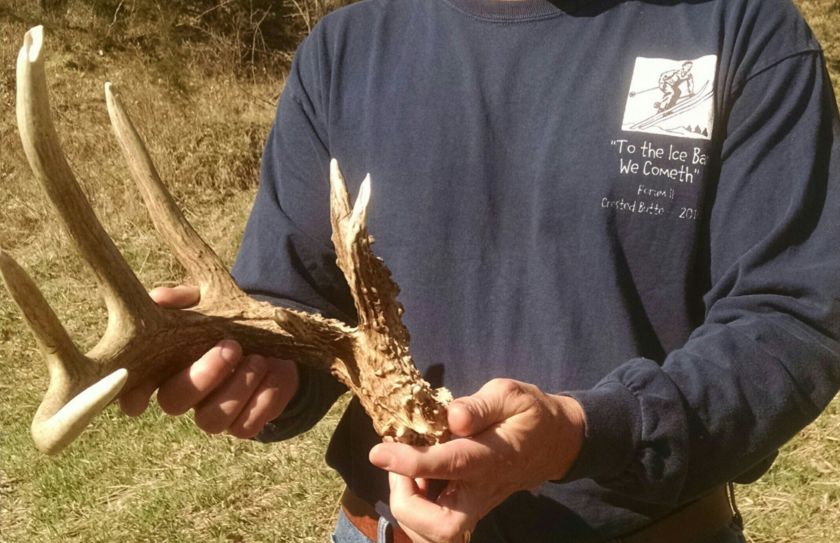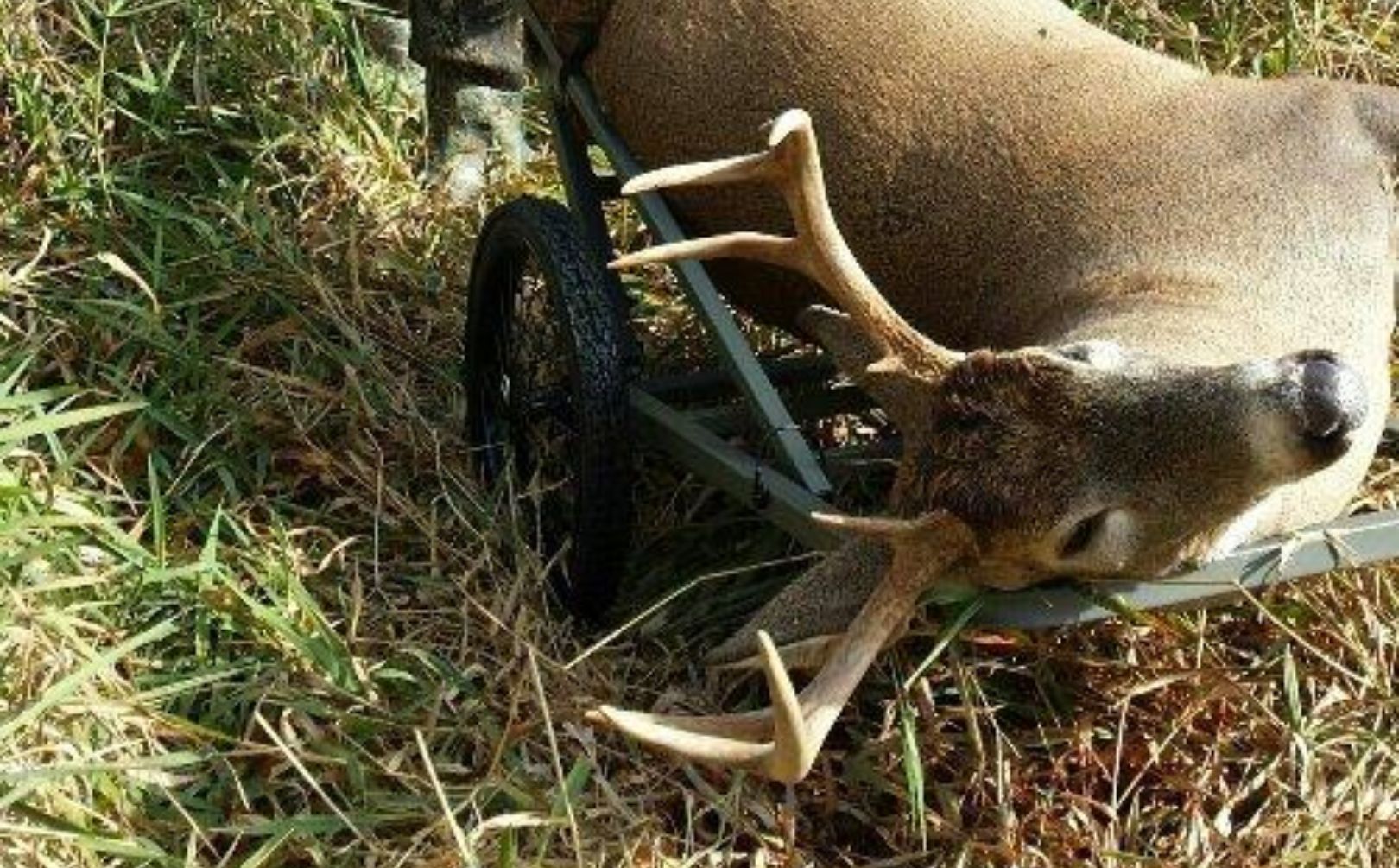
40 Acre MI Whitetail Habitat Plan
“I bought my property in December of 2012. It had all the features I was looking for except a river/creek either way I knew this was the one and had a lot of potential from my previous experiences with LaPratt on other properties and boot camp. However when Jeff Sturgis posted his release of his book on MSF (Michigan Sportsmans Forums), I ordered it and read it 3 times. Everytime I read it something new pops up that I missed and makes more sense. I read all his articles on his website and keep learning from this guys wealth of knowledge shared on his website and on MSF. I started following Jeffs recommendations on his food plot designs, drew up a million designs and then came August, came across Heath’s experience (previous client who had only 8 acres) and said wow If he can do this with 8 acres what could he do with my 40. So dad (cheapskate!) tried to convince me that we could do the work and I knew we could improve but wasn’t confident (one shot at hinge placement) enough that I would be able to bring the property to its full potential and do what Jeff does so well & that’s looking at the whole picture and turn it into one well balanced parcel. After we purchased it, we saw 6 does during the whole month and all year I was getting an avg of 12 deer, 4 were bucks, & about 400 pics of the same herd over a 2 week period.
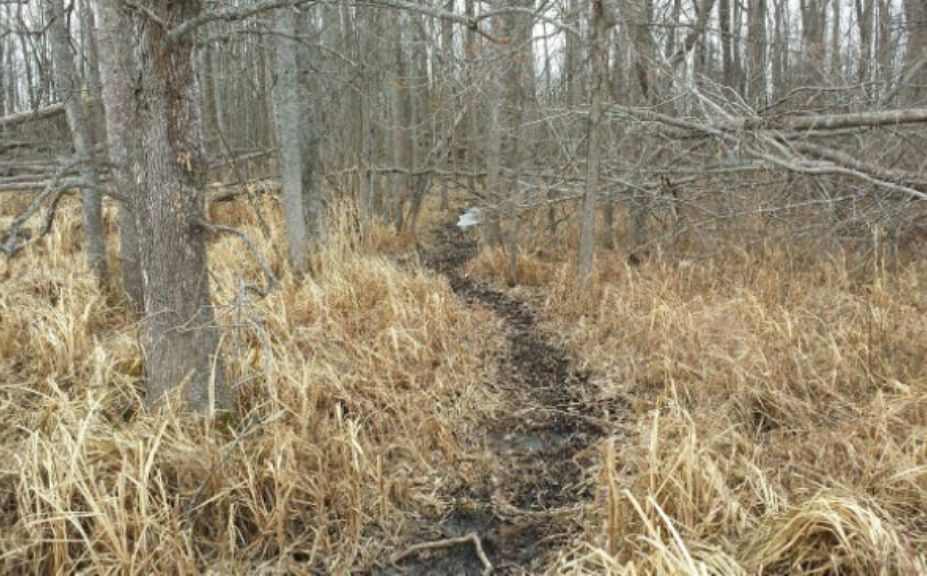
Fast forward to Sept. 18, 2013: Jeff Sturgis visits and designs my layout. All I can say is wow! $$$ well spent!! This guy knows deer, habitat, & how to bring you immediate success. After Jeffs visit and hinge cutting example he did on the property, my cam pics went skyrocketing to 2000+ pics vs the 400 and the bucks started immediately to show! Well of course with some hard work on my part! Jeff said if you can get the other cutting done even into the first week of Oct…it will be huge for your property, so busted my a** & got it done, then hung my stands. Late September I cut my access lane. I wasn’t finished with his design by the Fall of 2013, and wasn’t expecting much that year because it was so late. I was actually writing the year off w/o much anticipation of getting a nice buck. But was looking forward to the future….well that came Oct. 20, 2013.
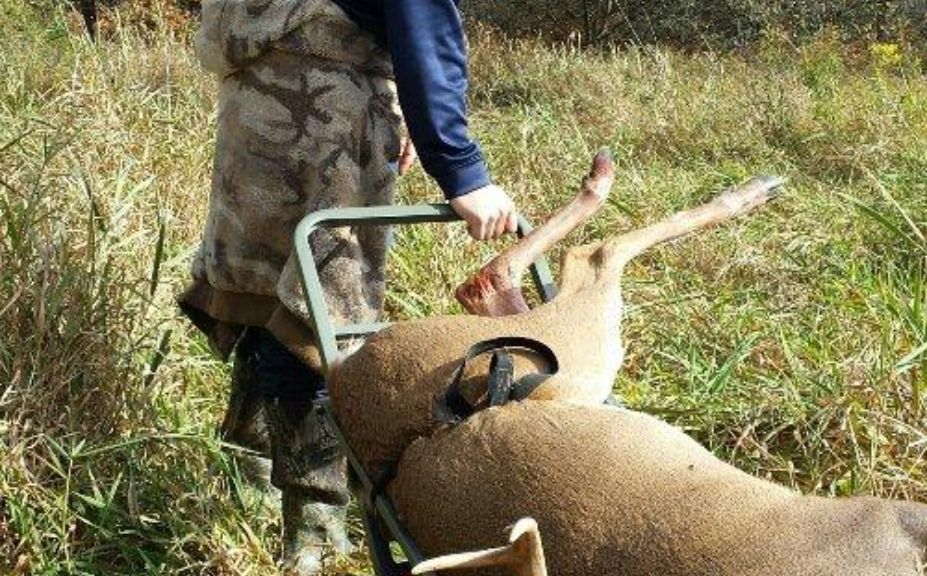
I had been paying attention to Jeff’s cold front postings and when he posted that we were 1/2-1 day behind him I studied the forecast and decided to pass off my weekend overtime and head for the cabin a week earlier than I usually start to hunt prime stands. So my first hunt was Sat. night out of a stand placement that Jeff recommended. Jeff’s post said near, but not on food in evening so I’m a little earlier than usual but gonna give this stand a try for the first time of the year. With 50mph gusts I had doubts and thought I missed the end of the cold front by a half day. Then Bam at 5pm it was like someone shut the lights off on the wind and rain. Dead silence. And then most of the deer poured out into a draw and into the food….I thought damn Jeffs good! Saw 19 does and 3 bucks. 1 shooter. Dad saw 9 and 2 small bucks. Jeff said bedding and corridors in the morning, but I didn’t have a good wind for any of those stands. So I tried the the draw stand again. Surround by Jeffs beds and corn to the south, thought I couldn’t go wrong. To my surprise the deer were coming from the beds and corridors vs the corn where I figured they would hang until its down. Single big deer came through the draw at dawn but too dark to see. Then saw 9 does, a small buck and at 9:30 this buck I shot came from behind me walked down the draw and was headed for the apple corridor. I stuck him at 30 yds. The woods is becoming a huge attraction for the herd and would like to thank Jeff for his services! Cool thing is all this happened quickly with some long hard days of work and I’m just getting started”
-Anthony Michigan
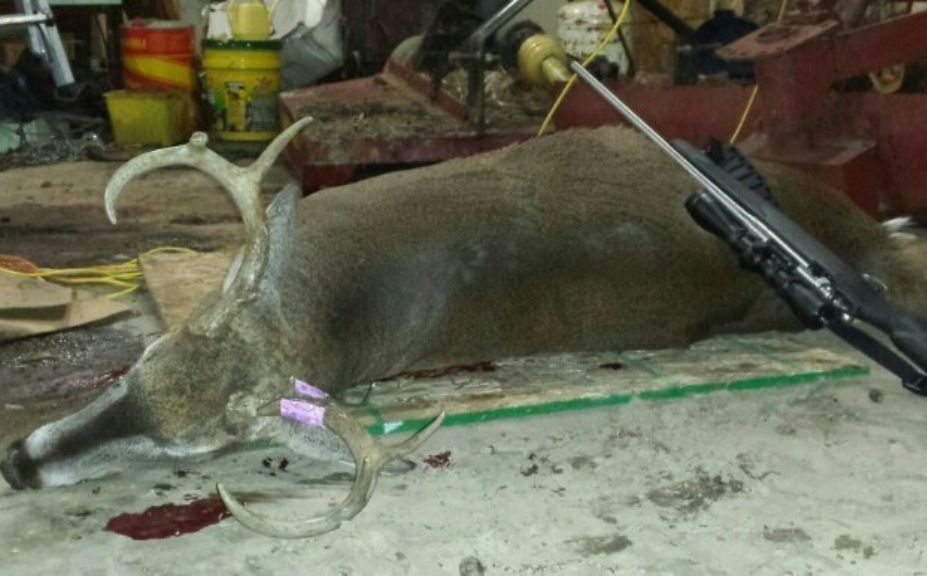
Part of what makes this Central MI whitetail habitat plan and property very attractive, is that it is almost completely surrounded by ag. Ag parcels can change very quickly, because if you supply great food and great cover, and leave it alone, you often have no problem piling the deer into it! Now by leave it alone, I mean hunt it effectively but that being said; the parcel has to be designed to hunt effectively or the improvements can do much more harm, than good. An effective whitetail habitat plan always aims to take the pressure from hunting, out of the hunt.
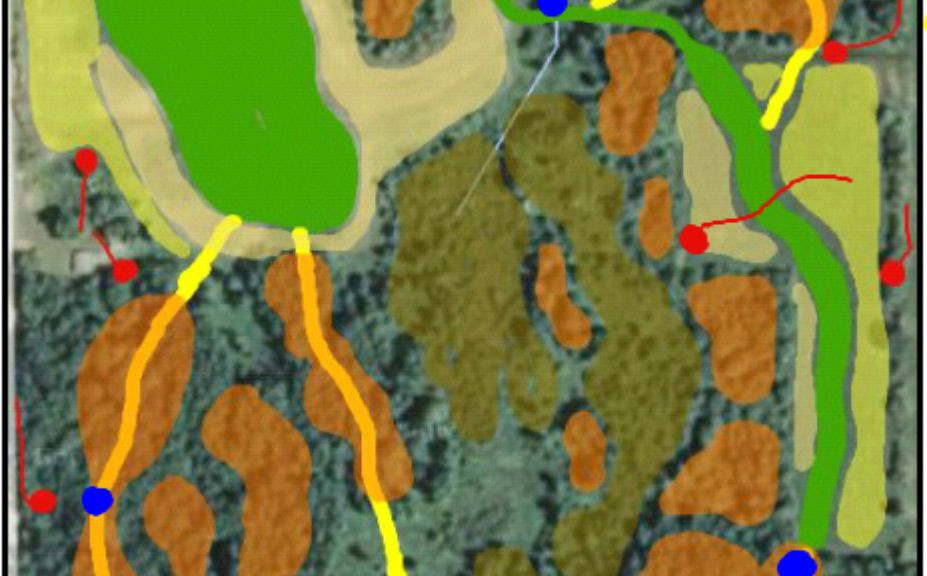
1. Food Source:
The smaller the parcel, the more a major food source needs to be pulled to one side, or corner. Food displaces mature buck bedding. A thin food strip of under 30′ wide is pretty low impact, but a food source of a 1/4 acre or more in size will definitely create a large enough social area that mature bucks stay a great distance away. This effect is greater in wilderness/deep woods settings where deer have a 100s of great bedding areas to choose from with sometimes dozens of acres of cover or more, per deer. In ag settings though, you can confine deer to smaller spaces and this parcel is an example of that. Simply, deer do not have a choice but to be sandwiched in close proximity together. But still, you have to make the most of the depth of cover that is given. I looked to reduce the amount of food on the east side so that the majority of the doe family groups would focus their bedding efforts towards the northwest corner of the parcel, effectively providing a “depth of cover” running through the center of the parcel and all the way to the southeast corner. This also makes the entire south side of the parcel extremely remote with effective food-related doe bedding areas surrounding a large area of the NW food source well to the north.
For more info relating to providing enough “depth of cover” for both bucks and does, try reading Deer Bedding Strategies
2. Paralleling Habitat Improvements:
For the most part, the improvements on this parcel run parallel to the parcel borders. This is critical within a small parcel especially, that since you can not possibly encompass a complete movement of the local deer herd. You would much rather have your improvements lead deer around your parcel…than off of your parcel. I recently looked at a plan that took advantage of a large hayfield to the north, with food plots in a line running north to south through most of a 1/4 mile area. The plan called for connecting the neighbor’s great cover to the south, to the large food source across the North border of the client’s parcel. Although in theory it looked great on paper because it certainly created a giant North/South corridor, what it actually did was to create a chain of food several hundred yards long that encouraged deer to bed off of the parcel to the south. When you have a buck travel onto the property, you want him to get into the parcel borders and turn right or left while following your improvements on your parcel instead of merely passing straight through. While creating the opportunity for deer to be able to travel from food to cover to cover to food to cover, etc., all while staying on your own parcel, you can greatly deminish the effects of any potential negative neighboring hunting pressure. Anthony’s MI Whitetail Habitat Plan offers the option for both bucks and does to spend a great deal of time traveling within the parcel borders, instead of off of them.
Make sure that the deer are pointed within your own borders, and not to your neighbor’s. For more information relating to creating your next great stand location, try reading about Where to Plant Hunting Plots
3. Parcel Efficiency:
Everyone talks about a sanctuary and the importance of a sanctuary, but very few have areas where a deer can bed or feed during daytime hours and never hear, see, or smell a hunter. And I include all food sources in that too! Your food sources should offer the same security as your most protected sanctuary…it ALL should be sanctuary and be treated the same unless you have to access through it to enter or exit a stand location. On a side note I don’t mind at all working in the woods from January until late August…but that is another topic. Sanctuaries are built during Sept-January, and what takes place the rest of the year has very little effect on the local deer herd. If you draw a line from stand location to stand location, that line will define the parcel efficiency, by creating an area on the hunter access side of the line for hunters, and the area on the other side of the line, for deer. In the case of this parcel, the landowner approaches a 75% efficiency rating, or 30 acres. That 30 acres includes the area that except for deer retrieval or post season habitat chores, is “all deer, all the time”. It is impossible to dedicate 100% of your parcel acreage completely to the deer herd because you have to be able to access and hunt the parcel. One of the worst things that you can do is to improve your parcel 100% because you can then never access it without the possibility of spooking deer. On parcel of 80-100 acres or more it is often possible to attain an efficiency of 80% or more, with roughly 60-70% typical of 40 acres, and more like 50% on smaller parcels.
Is your whitetail habitat plan efficient? Try reading Whitetail Habitat Strategies to the Bowstand
4. Huntability:
It is important to create a whitetail habitat plan that you can actually hunt with every possible wind direction, and condition for time of year and time of day. On Anthony’s parcel this is no exception with stand locations located around the entire parcel, but it goes much deeper than that. He has the option to hunt closer to food in the evening at various hot points that serve to funnel deer into a downwind access, as well as to hunt between and on the backside of bedding areas with morning hunts during the pre-rut and rut. He can also hunt less invasive cruising stands between bedding areas such as on the south side, and even the north and east sides. When it comes time for late season food-hunting, where you stay away from the bedding areas for morning hunts and watch deer pour into the food in eary afternoon, he can do that with well placed and hidden shooting houses on the north, west, and east sides of his parcel.
Deer herds are built during the hunting season! Try reading this article for more information about Building a Quality Deer Herd
Separation of Bedding Opportunity is critical to the success of a whitetail habitat plan.
5. Separation of Bedding Area:
I really like this parcel in it’s ability to achieve separation of not only both sexes of deer…but from each other. Separation is important because deer, especially doe family groups, are highly territorial. 2 acres of cover can be taken over by 1 doe family group and that dominant doe will keep every other deer out of “her” area. On the other hand, take that same 2 acres and separate it by 30 yards of open hardwood or less desirable cover and you can hold TWO doe family groups. Separate that 2 acres into four, 1/2 acre areas and well…you get the pictures. Separation not only means that you can hold more deer in the same amount of space, but it also allows for the separation for yearling bucks from doe family groups, mature bucks from the rest of the herd. Getting back to the confines of ag parcels…you can pack a LOT of deer into 1 small parcel through separation. The opposite would be a 40 acre parcel of mature hardwoods, in which literally 1 or 2 doe family groups can rule the entire parcel. Anthony’s whitetail habitat plan has areas of hardwoods where small, separate pockets of cover can be cut, areas of rolling Autumn Olive that can be carved out and changed with the addition of conifer pockets to increase the attractiveness, and areas of willow/cat-tail marsh where room-sized cut-outs can house 1 mature buck…or a doe family group of 5 depending on the location and proximity to food/overall stress by deer and people. Add in a rolling topography and non-invasive access and Anthony can house a deer herd that rarely has to be exposed to the outside of his 40 acres if he does his part to keep from spooking them.
Read Scouting Deer Bedding Areas for more info about various bedding strategies.
6. Additional Water Sources
I would also like to see Anthony place a water hole at the access point in the SE corner where he shot his deer to help further define the travel corridor and stand location, as well as one along the west and north border. Those are also great spots for camera locations as well, with the cards being checked during the season when the adjacent stand locations are hunted.
Waterholes are very easy to add, just read Deer Waterhole Hunting Strategies for a complete waterhole source with video and blog links for making sure that you do it correctly the first time.

Conclusion
Although located within a high hunter density area in central MI, Anthony’s success is certainly not over yet! The success of his harvest continues to climb along with the quality of his land. In 2015 he has very high hopes for a potential 4 year old in this heavily hunted area of MI; which truly is, a “needle in a haystack” attempt. However Anthony has worked as hard as any other client, I have no doubt that he will beat the odds very soon…and I can’t wait to hear all about it!
